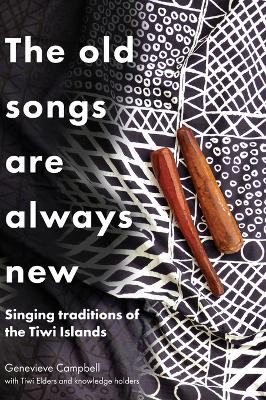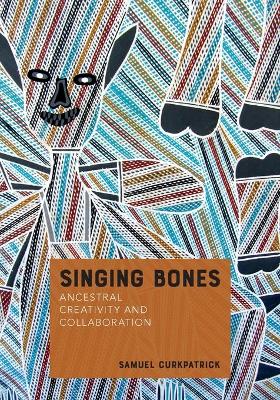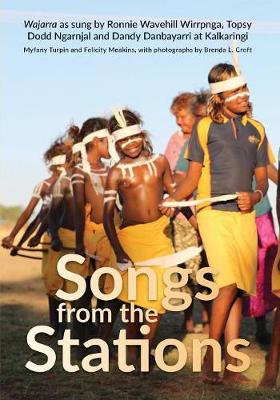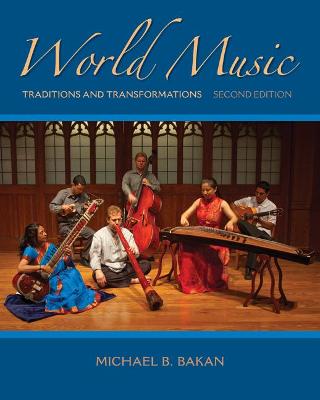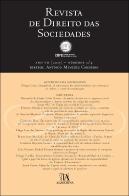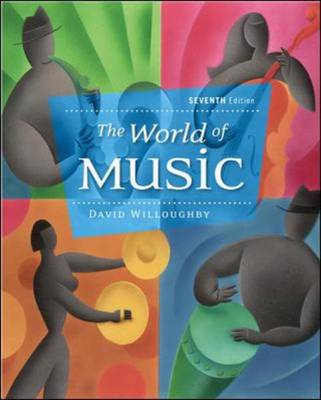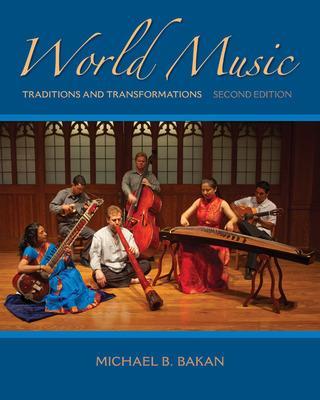World Music: Traditions and Transformations
World Music: Traditions and Transformations
Bakan, Michael B.
McGraw-Hill Education - Europe
02/2007
416
Mole
Inglês
9780072415667
0072415665
748
From cha cha cha to jeliya and Hindustani raga to hip-hop gamelan, this text takes students on a journey through diverse musical cultures and traditions of the world. It is a useful introduction to world music for non-music and music majors alike.
PA R T IChapter 1 What, in the World, Is Music? 1 A Point of Departure: Five Propositionsfor Exploring World Music 2 Proposition 1: The Basic Property of All Music Is Sound 2 Proposition 2: The Sounds (and Silences) That Comprisea Musical Work Are Organized in Some Way 3 Proposition 3: Sounds Are Organized into Music by People;Thus, Music Is a Form of Humanly Organized Sound 4 Proposition 4: Music Is a Product of Human Intentionand Perception 4 Proposition 5: The Term Music Is Inescapably Tiedto Western Culture and Its Assumptions 6 Summary 6 Key Terms 7 Study Questions 7 Discussion Questions 7 Applying What You Have Learned 7 Resources for Further Study 7 Chapter 2 How Music Lives: A Musicultural Approach 9 Culture in Music 10 Meaning in Music 11 Identity in Music 11 Societies 13 Cultures 15 Nations and Nation-States 16 Diasporas and Other Transnational Communities 17 The Individual in Music 18 Spirituality and Transcendence in Music 20 Music and Dance 21 Music in Ritual 22 Music as Commodity and the Patronage of Music 23 The Transmission of Music and Musical Knowledge 25 Production and Reception 25 Music Creation Processes 26 Music in the Process of Tradition 27 Summary 29 Key Terms 29 Study Questions 29 Discussion Questions 30 Applying What You Have Learned 30 Resources for Further Study 30 Chapter 3 How Music Works, Part I: Rhythm 31 The Four Basic Properties of Tones 32 Rhythm 32 Beat 34 Subdivision 34 Meter 35 Accent and Syncopation 39 Tempo 39 Free Rhythm 40 Summary 40 Key Terms 40 Study Questions 41 Applying What You Have Learned 41 Resources for Further Study 41 Chapter 4 How Music Works, Part II: Pitch 43 Pitch and Melody 44 Pitch and Melody in "Mary Had a Little Lamb" and a NativeAmerican Eagle Dance Song 44 Names of Pitches in Western Music 44 The Western Pitch System and the Octave 46 Common Scales in Western Music: Major, Pentatonic,Minor, and Blues 48 Modulation: Moving from One Scale and Key to Another 50 Pitch and Scales in Non-Western Musical Systems 51 Pitch, Chords, and Harmony 53 Single Chord-Based Music and Music with Chord Progressions 53 Harmonization of Melodies 53 Arpeggios (Broken Chords) 53 Other Chords, Other Harmonies 54 Summary 54 Key Terms 55 Study Questions 55 Applying What You Have Learned 55 Resources for Further Study 55 Chapter 5 How Music Works, Part III: Dynamics, Timbre,and Instruments 57 Dynamics 58 Timbre 59 Music Instruments 62 Music Instrument Classification 63 Summary 73 Key Terms 73 Study Questions 74 Applying What You Have Learned 74 Resources for Further Study 74 Chapter 6 How Music Works, Part IV: Texture and Form 75 Single-Line Textures 76 Multiple-Part Textures 76 Form: The Designs of Musical Works 79 Repetition and Patterning 79 Forms with Contrasting Sections 82 Summary 84 Key Terms 84 Study Questions 85 Applying What You Have Learned 85 Resources for Further Study 85 PART 2Chapter 7 Interlocking Rhythms and Interlocking Worldsin Balinese Gamelan Music 87 Introduction 90 Balinese Gamelan Music in Context 90 Bali and the Republic of Indonesia 90 Religion in Bali and Indonesia 91 Gamelan in Bali and Beyond 92 The Gamelan Beleganjur: An Introduction 95 Kilitan Telu Interlocking Rhythms: A Musical Symbolof Communal Interdependence 95 Musical Guided Tour: The Gamelan Beleganjur 96 Balinese Kecak and the Kilitan Telu 97 Experiencing Balinese Interlocking, Kecak-Style 98 The Gamelan Beleganjur in Battles of Good versus Evil 99 Beleganjur Music in Hindu-Balinese Cremation Processions 99 Guided Listening Experience: Beleganjur Music Performedduring a Balinese Cremation Procession 101 Crossroads Battles and a Musical Ladder to the Upper World 102 Walking Warriors: Worldly Battlegrounds of BeleganjurMusic 103 Lomba Beleganjur: The Modern Beleganjur Contest 104 Kreasi Beleganjur: The Contest Musical Style 105 Tradition and Innovation in Kreasi Beleganjur:An Elusive Balance 106 Achieving the Elusive Balance: The Kreasi Beleganjur Musicof I Ketut Suandita 108 Guided Listening Experience: "Wira Ghorava Cakti '95"(Kreasi Beleganjur), by I Ketut Suandita 109 Crossing International Borders 110 Guided Listening Experience: "B.A.Ph.PET," by Michael Bakan 111 Summary 114 Key Terms 114 Study Questions 114 Discussion Questions 115 Applying What You Have Learned 115 Resources for Further Study 115 Chapter 8 Raga, Ravi Shankar, and Intercultural Crossingsin Indian Music 117 Indian Music in Context 120 Musical Diversity and Two Great Traditions 123 The Hindustani Raga of Northern India 125 Ravi Shankar and the Maihar Gharana 126 "An Introduction to Indian Music," by Ravi Shankar 127 The Sitar-Tambura-Tabla Trio: Instruments and Texture 128 Musical Guided Tour: "An Introduction to Indian Music" 128 Raga Defined 132 Tala: Meter and Rhythm in Raga Performance 132 How a Raga "Grows" 133 Form in Raga Performance 134 Keeping Tal with Ravi Shankar 135 Guided Listening Experience: "Raga Nat Bhairav"(Hindustani Raga), Vishwa Mohan Bhatt 138 Intercultural Crossings 141 Early Inroads: West Meets East, Improvisations, and the Musicof John Coltrane 142 Ravi Shankar, the Beatles, and the "Great Sitar Explosion" 143 A New Level: John McLaughlin and Shakti 144 Guided Listening Experience: "Joy," Shakti 145 Trilok Gurtu: Global Fusion Artist Extraordinaire 147 Guided Listening Experience: "Living Magic," Trilok Gurtu 148 Summary 150 Key Terms 151 Study Questions 151 Discussion Questions 151 Applying What You Have Learned 152 Resources for Further Study 152 Chapter 9 Tradition and Transformation in Irish Traditional Music 153 A Preliminary Listening Experience 156 Irish Music in Context 156 An Introduction to Irish Traditional Music 158 Traditional Irish Dance Tunes and Medleys: Two Examples 159 Musical Guided Tour: Irish Traditional Dance Tunes 160 Guided Listening Experience: "The Cuckoo's Hornpipe,"Seamus Ennis 162 Guided Listening Experience: "The First House in Connaught/The Copper Plate Reel" (Medley), Seamus Ennis 165 The Life and Legacy of Seamus Ennis 168 Neo-Traditional Irish Music and the Irish Music Revival 170 Sean O'Riada and the Transformation of Irish Traditional Music 171 The Chieftains 171 Guided Listening Experience: "The Dingle Set" (Medley),The Chieftains 172 The 1970s: Second Generation of the Irish Music Revival 174 The Modern Ensemble Sound of Irish Traditional Dance Music 174 Guided Listening Experience: "The Emyvale/Ril Gan Ainm/The Three Merry Sisters of Fate" (Medley), Altan 176 The Post-Traditional World of Irish Music: Crossing Bridgeswith Eileen Ivers 179 The Music and Life of Eileen Ivers 179 Guided Listening Experience: "Gravelwalk" (Medley),Eileen Ivers 180 Summary 183 Key Terms 183 Study Questions 183 Discussion Questions 184 Applying What You Have Learned 184 Resources for Further Study 184 Chapter 10 Musical Conversations: Communication and CollectiveExpression in West African Musics 185 African Musics in Context 188 The African Continent, Sub-Saharan Africa, and theAfrican Diaspora 188 Music, Culture, and History in Sub-Saharan Africa 189Drumming 190 Fontomfrom: An Akan Royal Drum Ensemble 191 Musical Guided Tour: Instruments and Basic Rhythmic Patternsin Fontomfrom Music 192 Guided Listening Experience: Fontomfrom(Akan Royal Drum Ensemble Music) 194 Unifying Features of Music in West Africa: Musical Africanisms 195 More Than Drumming: African Musical Diversity and the Kora 196 The Kora and Its Musicultural World 197 Mande History and Culture 198 The Jeli and the Art of Jeliya 199 Seckou Keita: Kora Master, Jeli, and Radical Royal 200 "I am not shy to sing and play the kora" 201 Guided Listening Experience: "Dounuya," Seckou Keita 202 A Meeting of Musical Worlds: "Atlanta Kaira" 204 Guided Listening Experience: "Atlanta Kaira," Toumani Diabate,Taj Mahal, and Ensemble 206 Angelique Kidjo: West African Collective Expressionin a Global Musical World 209 The Diva from Benin 209 Guided Listening Experience: "Okan Bale," Angelique Kidjo 211 Summary 213 Key Terms 214 Study Questions 214 Discussion Questions 215 Applying What You Have Learned 215 Resources for Further Study 215 Chapter 11 "Oye Como Va": Three Generations in the Life of a ClassicLatino/American Dance Tune 217 Introduction 218 "Oye Como Va" and Latin Dance Music in Context 219Latin Dance Music Defined 219 A Latino/American Phenomenon 221 Cuba, Creolization, and the Roots of Latin Dance Music 222 Afro-Cuban Roots of Latin Dance Music 222 Spanish-Cuban Roots of Latin Dance Music 224 The Danzon-Mambo 225 Enrique Jorrin and the Cuban Cha Cha Cha 225 Musical Guided Tour: Latin Percussion Rhythmsof the Cha Cha Cha 227 Mambo (Big Band Mambo) 228 Tito Puente, the Newyorican Connection, and Latino/AmericanMusic Culture in New York City 229 Guided Listening Experience: "Oye Como Va,"Tito Puente (1963) 231 New Sounds, New Times: "Oye Como Va," the Santana Version 234 The Rise of Santana and Latin Rock 235 Guided Listening Experience: "Oye Como Va," Santana (1970) 237 Beyond the Music: Santana, "Oye Como Va,"and Pan-Latino Identity 240 Santana's "Oye Como Va" and Tito Puente 240 The King of Salsa 241 "Oye Como Va" and the Emergence of Pan-Latino Identity 241"Oye Como Va": The Next Generation 243 Guided Listening Experience: "Oye Como Va,"Tito Puente Jr. (2004) 244 Tito Puente Jr.: Into the Future, Back to the Past 246 Summary 247 Key Terms 248 Study Questions 248 Discussion Question 249 Applying What You Have Learned 249 Resources for Further Study 249 Chapter 12 From Baladi to Belly Dance: Women's Danceand Dance Rhythms in Egypt and Beyond 251 Introduction 252 Egypt: An Overview 257 Egyptian History 258 The Foundations of Egyptian Women's Dance 260 Speculations on Ancient Roots 261 The Ghawazi Tradition 261 Witness to a Ghawazi Performance 262 Zaar: Egyptian Women's Dance in a Healing Ritual 263 The Zaar Ritual 263 Guided Listening Experience: Traditional Zaar Rhythms,Hossam Ramzy 265 Musical Guided Tour: Demonstration of Dum andTek Drum Strokes 266 Music, Dance, Nationalism, and Mass Media Entertainmentin 20th-Century Egypt 267 The Contributions of Badiaa Masabni 268 Dance, Music, and the Egyptian Film Industry 269 Muhammad 'Abd al-Wahhab and Samia Gamal 269 Guided Listening Experience: "Zeina," by Muhammad'Abd al-Wahhab (Arrangement by Hossam Ramzy) 272 The Post-Independence Era 276 Cultural Nationalism and the Baladi Folk Idealin Post-Revolutionary Egypt 277 Farida Fahmy and the Reda Troupe 278 Folk Dance Rhythms in Raqs Sharqi and Belly Dance:Fallahi and Saaidi 278 The Tabla Solo Dance 280 Tabla Solo in a Raqs Sharqi Dance Routine 281 Guided Listening Experience: "Belhadawa Walla Belshaawa?"(Tabla Solo), Hossam Ramzy 282 From Cairo to Mexico 284 Summary 285 Key Terms 286 Study Questions 286 Discussion Questions 287 Applying What You Have Learned 287 Resources for Further Study 287 Chapter 13 A Musicultural History of the Chinese Zheng 289 Introduction 292 China: An Overview 293 The Nation-State of Modern China 293 From Antiquity to the Present 294 An Introduction to the Zheng 295 Musical Guided Tour: The Zheng 297 The Zheng in Imperial China 298 The Han Dynasty Era 299 The Tang Dynasty Era 299 The Ming and Qing Dynasty Eras 302 Regional Styles: Traditional Solo Zheng Music 304 Guided Listening Experience: "Autumn Moonover the Han Palace," Deng Haiqiong 305 Emergence and Development of the ConservatorySolo Zheng Style in Mainland China 307 Guided Listening Experience: "Return of the Fishing Boats,"by Lou Shuhua 308 Music and the Conservatory Solo Zheng Traditionin Communist China, 1949-1965 310 Guided Listening Experience: "Spring on Snowy Mountains,"by Fan Shang'e 312 The Cultural Revolution Era 314 The Rise of Deng Xiaoping and the Period of Openness 315 The Arts, the Zheng, and Musicultural Life in Post-1970s China 316 Guided Listening Experience: "Music from the Muqam,"by Zhou Ji, Shao Guangchen, and Li Mei 319 Summary 322 Key Terms 322 Study Questions 323 Discussion Questions 323 Applying What You Have Learned 324 Resources for Further Study 324Chapter 14 Climbing Jacob's Ladder: Modern Musical Reflections of an Ancient Jewish Mystical Text Jewish Music and Jewish Musics 328 Jewish History and the Zohar 330 Early Jewish History 330 Rabbinic Judaism, the Zohar, Kabbalah, and Reform Judaism 332 Modern Jewish History 333 Climbing Jacob's Ladder: Musical Symbolismand the Melodious Voice in Kabbalistic Prayer 334 Guided Listening Experience: "V'amazirim" (Zoharic chant),Isaac Kataev 335 Melodic Symbolism in "We Are Climbing Jacob's Ladder" 337 Musical Guided Tour: Melodic Contourin "We Are Climbing Jacob's Ladder" 338 Music, the Zohar, and the Secrets of the Torah 338 Roza D'Shabbos: The Secret of the Sabbath 339 Background Information on the Zohar and Roza D'Shabbos 339 Divine Reunification and Universal Redemptionin Roza D'Shabbos 341 Pinchas Pinchik's "Roso De Shabbos" (Roza D'Shabbos):A Tone-Poem about Holiness 342 Guided Listening Experience: "Roza DeShabbos,"Ruth Wieder Magan (after Pinchas Pinchik) 342 Ruth Wieder Magan: Dusting Off the Surfaces of Tradition 345 Zohar Remix 347 The Zohar in Zoehar's "Ehad" 348 Guided Listening Experience: "Ehad," Zoehar 350 Summary 352 Key Terms 353 Study Questions 353 Discussion Questions 353 Applying What You Have Learned 354 Resources for Further Study 354 Glossary 355 References Cited in the Text 365 Credits 369 Index 371
Este título pertence ao(s) assunto(s) indicados(s). Para ver outros títulos clique no assunto desejado.
From cha cha cha to jeliya and Hindustani raga to hip-hop gamelan, this text takes students on a journey through diverse musical cultures and traditions of the world. It is a useful introduction to world music for non-music and music majors alike.
PA R T IChapter 1 What, in the World, Is Music? 1 A Point of Departure: Five Propositionsfor Exploring World Music 2 Proposition 1: The Basic Property of All Music Is Sound 2 Proposition 2: The Sounds (and Silences) That Comprisea Musical Work Are Organized in Some Way 3 Proposition 3: Sounds Are Organized into Music by People;Thus, Music Is a Form of Humanly Organized Sound 4 Proposition 4: Music Is a Product of Human Intentionand Perception 4 Proposition 5: The Term Music Is Inescapably Tiedto Western Culture and Its Assumptions 6 Summary 6 Key Terms 7 Study Questions 7 Discussion Questions 7 Applying What You Have Learned 7 Resources for Further Study 7 Chapter 2 How Music Lives: A Musicultural Approach 9 Culture in Music 10 Meaning in Music 11 Identity in Music 11 Societies 13 Cultures 15 Nations and Nation-States 16 Diasporas and Other Transnational Communities 17 The Individual in Music 18 Spirituality and Transcendence in Music 20 Music and Dance 21 Music in Ritual 22 Music as Commodity and the Patronage of Music 23 The Transmission of Music and Musical Knowledge 25 Production and Reception 25 Music Creation Processes 26 Music in the Process of Tradition 27 Summary 29 Key Terms 29 Study Questions 29 Discussion Questions 30 Applying What You Have Learned 30 Resources for Further Study 30 Chapter 3 How Music Works, Part I: Rhythm 31 The Four Basic Properties of Tones 32 Rhythm 32 Beat 34 Subdivision 34 Meter 35 Accent and Syncopation 39 Tempo 39 Free Rhythm 40 Summary 40 Key Terms 40 Study Questions 41 Applying What You Have Learned 41 Resources for Further Study 41 Chapter 4 How Music Works, Part II: Pitch 43 Pitch and Melody 44 Pitch and Melody in "Mary Had a Little Lamb" and a NativeAmerican Eagle Dance Song 44 Names of Pitches in Western Music 44 The Western Pitch System and the Octave 46 Common Scales in Western Music: Major, Pentatonic,Minor, and Blues 48 Modulation: Moving from One Scale and Key to Another 50 Pitch and Scales in Non-Western Musical Systems 51 Pitch, Chords, and Harmony 53 Single Chord-Based Music and Music with Chord Progressions 53 Harmonization of Melodies 53 Arpeggios (Broken Chords) 53 Other Chords, Other Harmonies 54 Summary 54 Key Terms 55 Study Questions 55 Applying What You Have Learned 55 Resources for Further Study 55 Chapter 5 How Music Works, Part III: Dynamics, Timbre,and Instruments 57 Dynamics 58 Timbre 59 Music Instruments 62 Music Instrument Classification 63 Summary 73 Key Terms 73 Study Questions 74 Applying What You Have Learned 74 Resources for Further Study 74 Chapter 6 How Music Works, Part IV: Texture and Form 75 Single-Line Textures 76 Multiple-Part Textures 76 Form: The Designs of Musical Works 79 Repetition and Patterning 79 Forms with Contrasting Sections 82 Summary 84 Key Terms 84 Study Questions 85 Applying What You Have Learned 85 Resources for Further Study 85 PART 2Chapter 7 Interlocking Rhythms and Interlocking Worldsin Balinese Gamelan Music 87 Introduction 90 Balinese Gamelan Music in Context 90 Bali and the Republic of Indonesia 90 Religion in Bali and Indonesia 91 Gamelan in Bali and Beyond 92 The Gamelan Beleganjur: An Introduction 95 Kilitan Telu Interlocking Rhythms: A Musical Symbolof Communal Interdependence 95 Musical Guided Tour: The Gamelan Beleganjur 96 Balinese Kecak and the Kilitan Telu 97 Experiencing Balinese Interlocking, Kecak-Style 98 The Gamelan Beleganjur in Battles of Good versus Evil 99 Beleganjur Music in Hindu-Balinese Cremation Processions 99 Guided Listening Experience: Beleganjur Music Performedduring a Balinese Cremation Procession 101 Crossroads Battles and a Musical Ladder to the Upper World 102 Walking Warriors: Worldly Battlegrounds of BeleganjurMusic 103 Lomba Beleganjur: The Modern Beleganjur Contest 104 Kreasi Beleganjur: The Contest Musical Style 105 Tradition and Innovation in Kreasi Beleganjur:An Elusive Balance 106 Achieving the Elusive Balance: The Kreasi Beleganjur Musicof I Ketut Suandita 108 Guided Listening Experience: "Wira Ghorava Cakti '95"(Kreasi Beleganjur), by I Ketut Suandita 109 Crossing International Borders 110 Guided Listening Experience: "B.A.Ph.PET," by Michael Bakan 111 Summary 114 Key Terms 114 Study Questions 114 Discussion Questions 115 Applying What You Have Learned 115 Resources for Further Study 115 Chapter 8 Raga, Ravi Shankar, and Intercultural Crossingsin Indian Music 117 Indian Music in Context 120 Musical Diversity and Two Great Traditions 123 The Hindustani Raga of Northern India 125 Ravi Shankar and the Maihar Gharana 126 "An Introduction to Indian Music," by Ravi Shankar 127 The Sitar-Tambura-Tabla Trio: Instruments and Texture 128 Musical Guided Tour: "An Introduction to Indian Music" 128 Raga Defined 132 Tala: Meter and Rhythm in Raga Performance 132 How a Raga "Grows" 133 Form in Raga Performance 134 Keeping Tal with Ravi Shankar 135 Guided Listening Experience: "Raga Nat Bhairav"(Hindustani Raga), Vishwa Mohan Bhatt 138 Intercultural Crossings 141 Early Inroads: West Meets East, Improvisations, and the Musicof John Coltrane 142 Ravi Shankar, the Beatles, and the "Great Sitar Explosion" 143 A New Level: John McLaughlin and Shakti 144 Guided Listening Experience: "Joy," Shakti 145 Trilok Gurtu: Global Fusion Artist Extraordinaire 147 Guided Listening Experience: "Living Magic," Trilok Gurtu 148 Summary 150 Key Terms 151 Study Questions 151 Discussion Questions 151 Applying What You Have Learned 152 Resources for Further Study 152 Chapter 9 Tradition and Transformation in Irish Traditional Music 153 A Preliminary Listening Experience 156 Irish Music in Context 156 An Introduction to Irish Traditional Music 158 Traditional Irish Dance Tunes and Medleys: Two Examples 159 Musical Guided Tour: Irish Traditional Dance Tunes 160 Guided Listening Experience: "The Cuckoo's Hornpipe,"Seamus Ennis 162 Guided Listening Experience: "The First House in Connaught/The Copper Plate Reel" (Medley), Seamus Ennis 165 The Life and Legacy of Seamus Ennis 168 Neo-Traditional Irish Music and the Irish Music Revival 170 Sean O'Riada and the Transformation of Irish Traditional Music 171 The Chieftains 171 Guided Listening Experience: "The Dingle Set" (Medley),The Chieftains 172 The 1970s: Second Generation of the Irish Music Revival 174 The Modern Ensemble Sound of Irish Traditional Dance Music 174 Guided Listening Experience: "The Emyvale/Ril Gan Ainm/The Three Merry Sisters of Fate" (Medley), Altan 176 The Post-Traditional World of Irish Music: Crossing Bridgeswith Eileen Ivers 179 The Music and Life of Eileen Ivers 179 Guided Listening Experience: "Gravelwalk" (Medley),Eileen Ivers 180 Summary 183 Key Terms 183 Study Questions 183 Discussion Questions 184 Applying What You Have Learned 184 Resources for Further Study 184 Chapter 10 Musical Conversations: Communication and CollectiveExpression in West African Musics 185 African Musics in Context 188 The African Continent, Sub-Saharan Africa, and theAfrican Diaspora 188 Music, Culture, and History in Sub-Saharan Africa 189Drumming 190 Fontomfrom: An Akan Royal Drum Ensemble 191 Musical Guided Tour: Instruments and Basic Rhythmic Patternsin Fontomfrom Music 192 Guided Listening Experience: Fontomfrom(Akan Royal Drum Ensemble Music) 194 Unifying Features of Music in West Africa: Musical Africanisms 195 More Than Drumming: African Musical Diversity and the Kora 196 The Kora and Its Musicultural World 197 Mande History and Culture 198 The Jeli and the Art of Jeliya 199 Seckou Keita: Kora Master, Jeli, and Radical Royal 200 "I am not shy to sing and play the kora" 201 Guided Listening Experience: "Dounuya," Seckou Keita 202 A Meeting of Musical Worlds: "Atlanta Kaira" 204 Guided Listening Experience: "Atlanta Kaira," Toumani Diabate,Taj Mahal, and Ensemble 206 Angelique Kidjo: West African Collective Expressionin a Global Musical World 209 The Diva from Benin 209 Guided Listening Experience: "Okan Bale," Angelique Kidjo 211 Summary 213 Key Terms 214 Study Questions 214 Discussion Questions 215 Applying What You Have Learned 215 Resources for Further Study 215 Chapter 11 "Oye Como Va": Three Generations in the Life of a ClassicLatino/American Dance Tune 217 Introduction 218 "Oye Como Va" and Latin Dance Music in Context 219Latin Dance Music Defined 219 A Latino/American Phenomenon 221 Cuba, Creolization, and the Roots of Latin Dance Music 222 Afro-Cuban Roots of Latin Dance Music 222 Spanish-Cuban Roots of Latin Dance Music 224 The Danzon-Mambo 225 Enrique Jorrin and the Cuban Cha Cha Cha 225 Musical Guided Tour: Latin Percussion Rhythmsof the Cha Cha Cha 227 Mambo (Big Band Mambo) 228 Tito Puente, the Newyorican Connection, and Latino/AmericanMusic Culture in New York City 229 Guided Listening Experience: "Oye Como Va,"Tito Puente (1963) 231 New Sounds, New Times: "Oye Como Va," the Santana Version 234 The Rise of Santana and Latin Rock 235 Guided Listening Experience: "Oye Como Va," Santana (1970) 237 Beyond the Music: Santana, "Oye Como Va,"and Pan-Latino Identity 240 Santana's "Oye Como Va" and Tito Puente 240 The King of Salsa 241 "Oye Como Va" and the Emergence of Pan-Latino Identity 241"Oye Como Va": The Next Generation 243 Guided Listening Experience: "Oye Como Va,"Tito Puente Jr. (2004) 244 Tito Puente Jr.: Into the Future, Back to the Past 246 Summary 247 Key Terms 248 Study Questions 248 Discussion Question 249 Applying What You Have Learned 249 Resources for Further Study 249 Chapter 12 From Baladi to Belly Dance: Women's Danceand Dance Rhythms in Egypt and Beyond 251 Introduction 252 Egypt: An Overview 257 Egyptian History 258 The Foundations of Egyptian Women's Dance 260 Speculations on Ancient Roots 261 The Ghawazi Tradition 261 Witness to a Ghawazi Performance 262 Zaar: Egyptian Women's Dance in a Healing Ritual 263 The Zaar Ritual 263 Guided Listening Experience: Traditional Zaar Rhythms,Hossam Ramzy 265 Musical Guided Tour: Demonstration of Dum andTek Drum Strokes 266 Music, Dance, Nationalism, and Mass Media Entertainmentin 20th-Century Egypt 267 The Contributions of Badiaa Masabni 268 Dance, Music, and the Egyptian Film Industry 269 Muhammad 'Abd al-Wahhab and Samia Gamal 269 Guided Listening Experience: "Zeina," by Muhammad'Abd al-Wahhab (Arrangement by Hossam Ramzy) 272 The Post-Independence Era 276 Cultural Nationalism and the Baladi Folk Idealin Post-Revolutionary Egypt 277 Farida Fahmy and the Reda Troupe 278 Folk Dance Rhythms in Raqs Sharqi and Belly Dance:Fallahi and Saaidi 278 The Tabla Solo Dance 280 Tabla Solo in a Raqs Sharqi Dance Routine 281 Guided Listening Experience: "Belhadawa Walla Belshaawa?"(Tabla Solo), Hossam Ramzy 282 From Cairo to Mexico 284 Summary 285 Key Terms 286 Study Questions 286 Discussion Questions 287 Applying What You Have Learned 287 Resources for Further Study 287 Chapter 13 A Musicultural History of the Chinese Zheng 289 Introduction 292 China: An Overview 293 The Nation-State of Modern China 293 From Antiquity to the Present 294 An Introduction to the Zheng 295 Musical Guided Tour: The Zheng 297 The Zheng in Imperial China 298 The Han Dynasty Era 299 The Tang Dynasty Era 299 The Ming and Qing Dynasty Eras 302 Regional Styles: Traditional Solo Zheng Music 304 Guided Listening Experience: "Autumn Moonover the Han Palace," Deng Haiqiong 305 Emergence and Development of the ConservatorySolo Zheng Style in Mainland China 307 Guided Listening Experience: "Return of the Fishing Boats,"by Lou Shuhua 308 Music and the Conservatory Solo Zheng Traditionin Communist China, 1949-1965 310 Guided Listening Experience: "Spring on Snowy Mountains,"by Fan Shang'e 312 The Cultural Revolution Era 314 The Rise of Deng Xiaoping and the Period of Openness 315 The Arts, the Zheng, and Musicultural Life in Post-1970s China 316 Guided Listening Experience: "Music from the Muqam,"by Zhou Ji, Shao Guangchen, and Li Mei 319 Summary 322 Key Terms 322 Study Questions 323 Discussion Questions 323 Applying What You Have Learned 324 Resources for Further Study 324Chapter 14 Climbing Jacob's Ladder: Modern Musical Reflections of an Ancient Jewish Mystical Text Jewish Music and Jewish Musics 328 Jewish History and the Zohar 330 Early Jewish History 330 Rabbinic Judaism, the Zohar, Kabbalah, and Reform Judaism 332 Modern Jewish History 333 Climbing Jacob's Ladder: Musical Symbolismand the Melodious Voice in Kabbalistic Prayer 334 Guided Listening Experience: "V'amazirim" (Zoharic chant),Isaac Kataev 335 Melodic Symbolism in "We Are Climbing Jacob's Ladder" 337 Musical Guided Tour: Melodic Contourin "We Are Climbing Jacob's Ladder" 338 Music, the Zohar, and the Secrets of the Torah 338 Roza D'Shabbos: The Secret of the Sabbath 339 Background Information on the Zohar and Roza D'Shabbos 339 Divine Reunification and Universal Redemptionin Roza D'Shabbos 341 Pinchas Pinchik's "Roso De Shabbos" (Roza D'Shabbos):A Tone-Poem about Holiness 342 Guided Listening Experience: "Roza DeShabbos,"Ruth Wieder Magan (after Pinchas Pinchik) 342 Ruth Wieder Magan: Dusting Off the Surfaces of Tradition 345 Zohar Remix 347 The Zohar in Zoehar's "Ehad" 348 Guided Listening Experience: "Ehad," Zoehar 350 Summary 352 Key Terms 353 Study Questions 353 Discussion Questions 353 Applying What You Have Learned 354 Resources for Further Study 354 Glossary 355 References Cited in the Text 365 Credits 369 Index 371
Este título pertence ao(s) assunto(s) indicados(s). Para ver outros títulos clique no assunto desejado.



